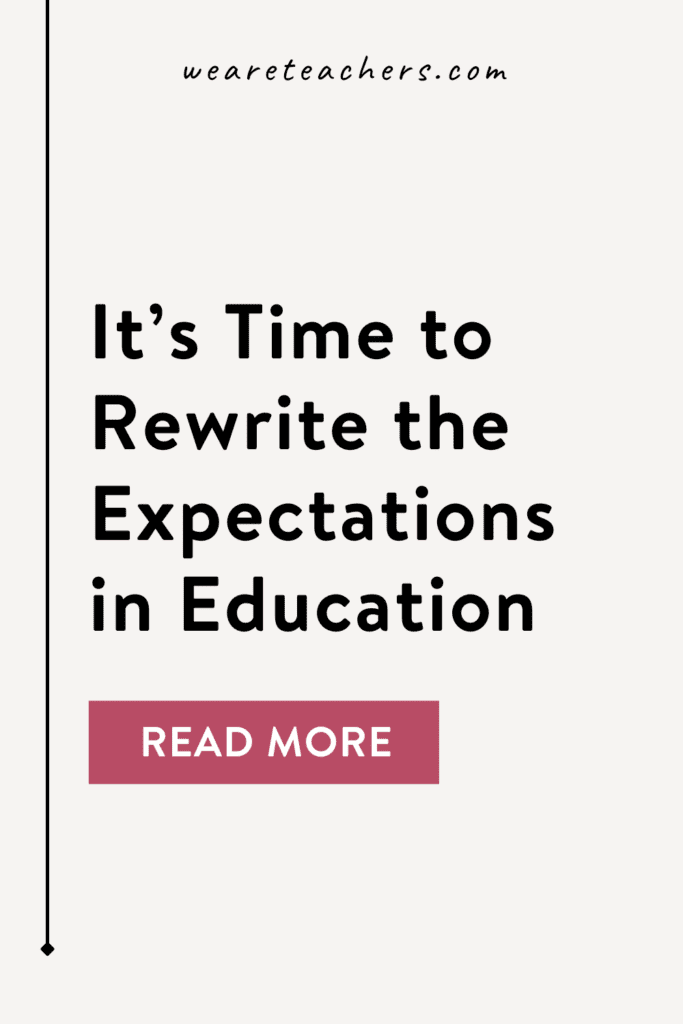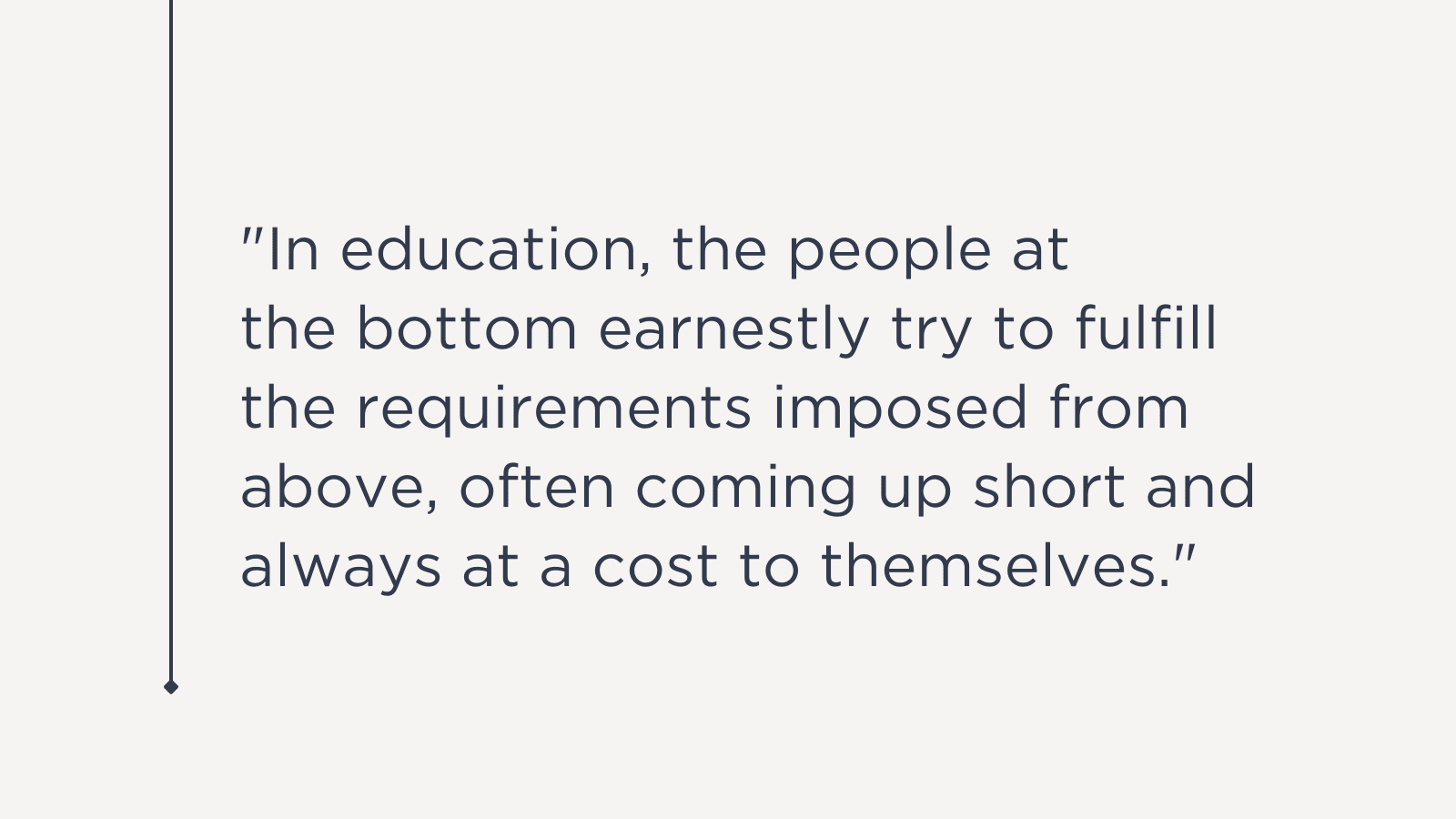Expectations are often a reflection of what we believe and hope to achieve. They help us to set the pace, set the tone, and my favorite—expectations help us to imagine. But expectations alone will not work; they need boundaries. Whether we want to use expectations to inspire, motivate, or collaborate, including boundaries with expectations makes our goals clear and possible.
Setting boundaries in education
Without boundaries, we run the risk of perpetuating how expectations often play out. So often, people who conjure up the expectations don’t make room for boundaries to be set. Hence, turning their noble aspirations into fixed norms, regulations, policies, and laws before the expectations have been stress-tested and adjusted based on the evidence. Then, ta-da! We all end up literally working miraculously. Or trying to.
What does that look like in the education system? Magic realism.
Here’s how expectations often play out in the top-down, trickle-down effect in education.
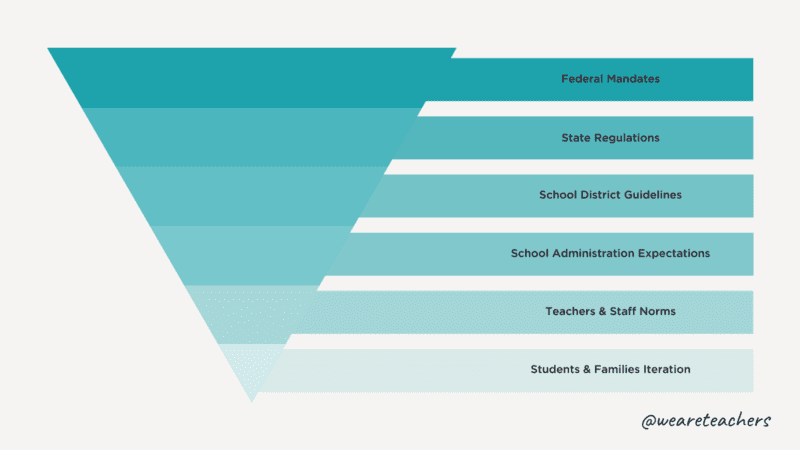
In education, the people at the bottom earnestly try to fulfill the requirements imposed from above, often coming up short and always at a cost to themselves.
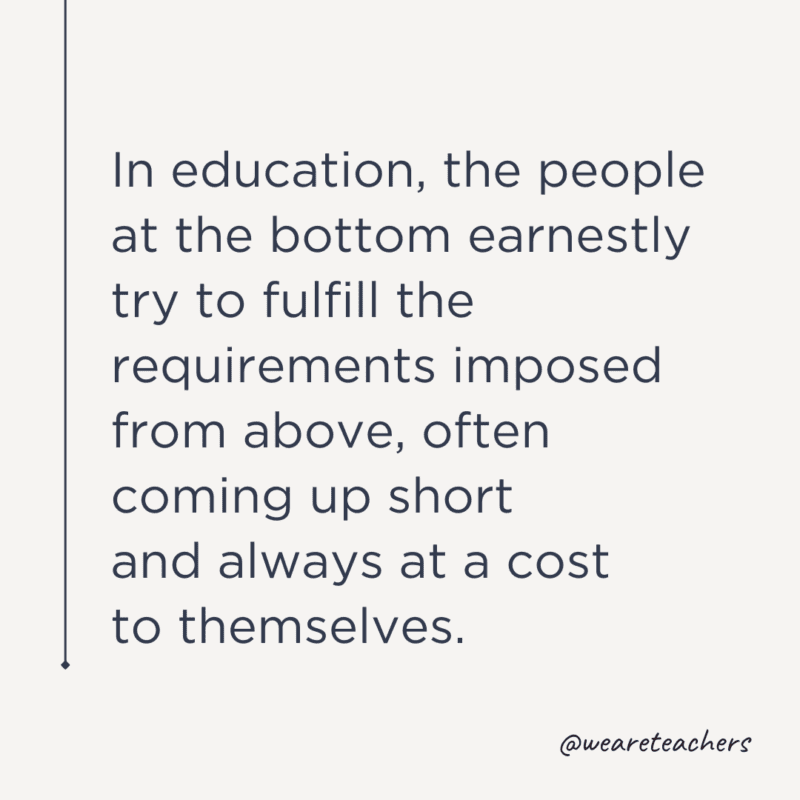
The breakdown of expectations
Teachers and staff, students and families, are the people most harmed by this magic realism. We see this in the way the process works. By the time a federal mandate or state requirement trickles its way down to the school level, the reality of those expectations decreases. Take the IDEA law, for example. As a special educator and parent of a child with a suspected disability, I am grateful for this law. Yet, as the law is interpreted at each level, it becomes less and less feasible to consistently meet the subsets of the law. Take timelines, for example. They are one type of expectation set by the people above. That’s because people at the top don’t take into account all the other responsibilities already on the plate:
- Lesson planning.
- Lesson implementing.
- Assessing.
- Making revisions to instruction.
- Grading.
- Communicating with parents.
- Co-planning.
- Preparing for and attending data meetings.
- Researching/staying up-to-date on best practices.
- Facilitating field trips.
- Etc.
And when you factor in the required documentation, it’s clear that it’s not possible to complete the expectations during paid work hours. As a result, the expectations interrupt the school day and often interrupt family time, rest time, health time, and a personal favorite, my time.
In short, some of the legally binding timelines are just not plausible, nor humane. Unfortunately, many who wield power are aware of the compliance culture in education and take advantage of it. For example, in some districts, the leaders know there is a lack of union representation to protect teachers, and that therefore it’s less likely teachers will individually or collectively push back. Thus, the pages of this never-ending story keep turning.
Rewriting the narrative of expectations
But that’s the beauty of the magic realism genre, right? We are wowed by the strategic blurring of two worlds into one. Even though we know one realm is fantastical, the packaging and straightforward delivery of it all makes it appear realistic and doable. It’s only when we dare to take a step outside of the narrative that we’ve been characters in for so long that we can see that there are elements of magic required to make this story—the story of educating—flow.
That combination of reality and fantasy are huge factors in teacher burn-out, high turnover rates, quality of work, and diminishing school culture.
But here’s the thing. It seems we’ve been at the peak of this story for quite some time. And possibly, hopefully, we are finally resolving the story arc in a manner that is satisfying. In fact, maybe it’s more apt to say we are finally shifting genres, from magic realism to realism. It’s an overdue shift that will allow us to initiate the creation of new stories for educators, staff, administrators, and the students and families we serve. And yes, the expectations will still be every bit aspirational, but this time, set in real contexts: real school setting, real people, real families, the real use of time, realistic mental agility, realistic energy, realistic expectations. Simply real.
And in these new stories, the people who choose to be a part of them will consider health and how the current laws and policies impact it. Then act on those considerations. Act by pushing back so that the laws and policies reflect the real. And, even if the laws and policies take time to change, realize that in the short term, there is still something we can do.
There are actionable steps we can take
With that said, no matter the stake we hold in education, know that the pen (or the keyboard) is in our hands. No matter if we’re rewriting the narrative of expectations on a larger scale or a more localized scale, just know that there are actionable steps we can take to make this school year, and subsequent years, more conducive to the protection, sanity, and sustainability of educating youth.
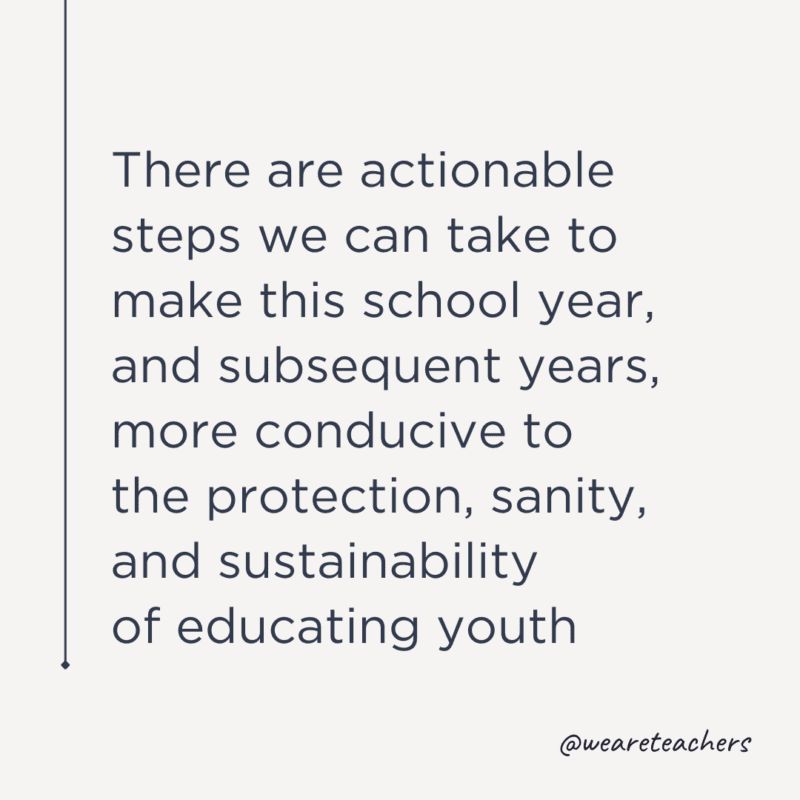
To that end, I’ve included tips, for each of us, based on our roles in education, to help us set reasonable expectations. Please click on the following links:
- Rewriting the Narrative of Expectations: Tips for Administrators
- Rewriting the Narrative of Expectations: Tips for Teachers & Staff
- Rewriting the Narrative of Expectations: Tips for Families
- Rewriting the Narrative of Expectations: Tips for Students (Kindergarten to 4th Grade)
- Rewriting the Narrative of Expectations: Tips for Students (12 years+)
Are you good at setting boundaries with expectations? Share in the comments below.
Want more articles like this? Make sure to subscribe to our newsletters.
